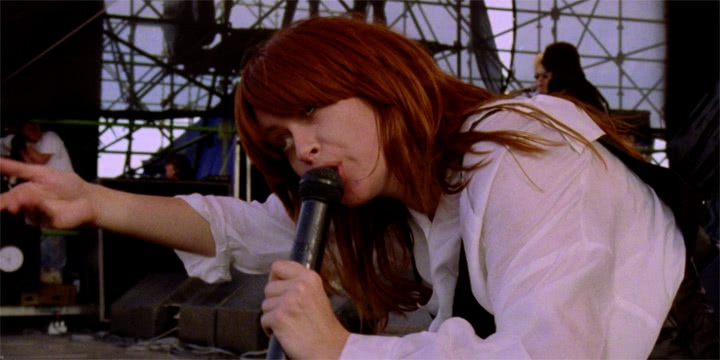Some 30 years ago, the ruling class of Australia’s pop and rock scenes gathered together for a series of concerts that would go on to define a generation.
The Australian Made tour ran from late December 1986 into the New Year, making its way to each of the six state capitals and attracting flocks of fans in the process.
The lineup was unbeatable: alt-rock legends The Triffids rubbed shoulders with punk pariahs The Saints, while Divinyls and INXS played overstuffed sets full of the songs that would go on to make them two of the most beloved bands in Australian pop history. Jimmy Barnes, then still a relatively fresh-faced solo act only a year out from the release of a little ditty called ‘Working Class Man’, used the festival appearance to showcase every one of his brawny, unpretentious talents, while stranger delights could be found in showings from Models and Mental As Anything.
It was, in short, a frantic celebration of everything that makes Australian rock and pop great: a rare case of Aussies abandoning the usual cultural shyness that defines them and wholeheartedly embracing their own musical roots. And famed Australian director Richard Lowenstein was there to capture every minute of it, producing the landmark doco Australian Made: The Movie in the process.
“It’s a bit of a time capsule,” Lowenstein says of the film, which he began work on shortly after the release of his Michael Hutchence-starring cult classic Dogs In Space. “I can’t actually say I remember a lot of the filming of Australian Made. I remember the edit a lot more than I actually remember filming it. We filmed it for two or three days, then we spent six months editing it all. And so when I saw the edit this year, I was like, ‘Oh yeah, I remember all this.’ But it’s good to see the musical community all there together in a very vibrant way.”
To celebrate the film’s 30th anniversary, it has been given a digital restoration, and will be re-released for a special one night only screening at cinemas around the country. Make no mistake: that’s a rare opportunity indeed, particularly given the film has gone through extensive re-edits over the years thanks to a range of petty copyright disputes, making a full restore a real treat.
“[The restoration] came out of the blue a bit for me,” says Lowenstein. “It just sort of appeared. We thought it was all lost – lost in copyright problems. But then it sort of appeared thanks to the producer John McLean. It was great to see that it was getting restored digitally.”
For Lowenstein, the most striking element of the film is the musical community it depicts – something the decorated director worries might just be a shining artefact of the past.
“It was quite an interesting time,” Lowenstein says. “We may not have realised at the time how unique it was. It was just a very vibrant time – there was a lot more money floating around due to record companies. People could actually fantasize about making a career in music and making a living out of it. There was money coming in from record sales, which is something that doesn’t really happen so much any more. It was a sort of a renaissance of art and music and filmmaking.”
Around the time of Australian Made’s filming, Lowenstein was largely supporting himself through the making of music videos, including several classics he filmed for bands like INXS and Cold Chisel. He speaks highly of the art form, not only because it allowed him to develop relationships with a range of influential bands, but also because in the early-to-mid-’80s it proved to be a viable way for a young filmmaker to hone their craft while simultaneously being able to support themselves.
“Music videos and commercials – there was a lot of space for all of that, good and bad,” he says. “You could actually seriously think of making a living by making music videos. Whereas [these days] I teach and I have interns coming in all the time, and they sort of sit there and go, ‘How can we survive in this world?’ And you really don’t know what to say. You can make music videos for your friends, but they’ll give you ten cents, so you’ve got to get a job as a courier at the same time. And of course that slows down your whole process.
“If you look at the speed and success of these musicians and filmmakers in the ’80s, it was incredibly fast. I was fresh out of film school in 1979 and by 1982 I was making my first feature film. The debut was not what you’d expect, either – it wasn’t a low-budget experimental film but a full-on period film set in the 1930s [Strikebound].”
Ultimately, it’s for this reason Lowenstein argues Australian Made provides a glimpse into a different cultural epoch – a chance to bear witness to an era in which Australian art and culture was supported, and bands didn’t have to be afraid of the sound of their own accent.
“There was this proudness in the variations of Australian-ness of the music, without the cultural cringe,” he says. “Now it’s a global market, epitomised by Australian performers who have to kind of pretend to be Americans, without mentioning any names specifically. Now you have to appeal to a global market to survive.”
Australian Made: 30th Anniversary Edition (dir. Richard Lowenstein) plays at Event Cinemas on Friday November 25. For more details and tickets head to eventcinemas.com.au.


































